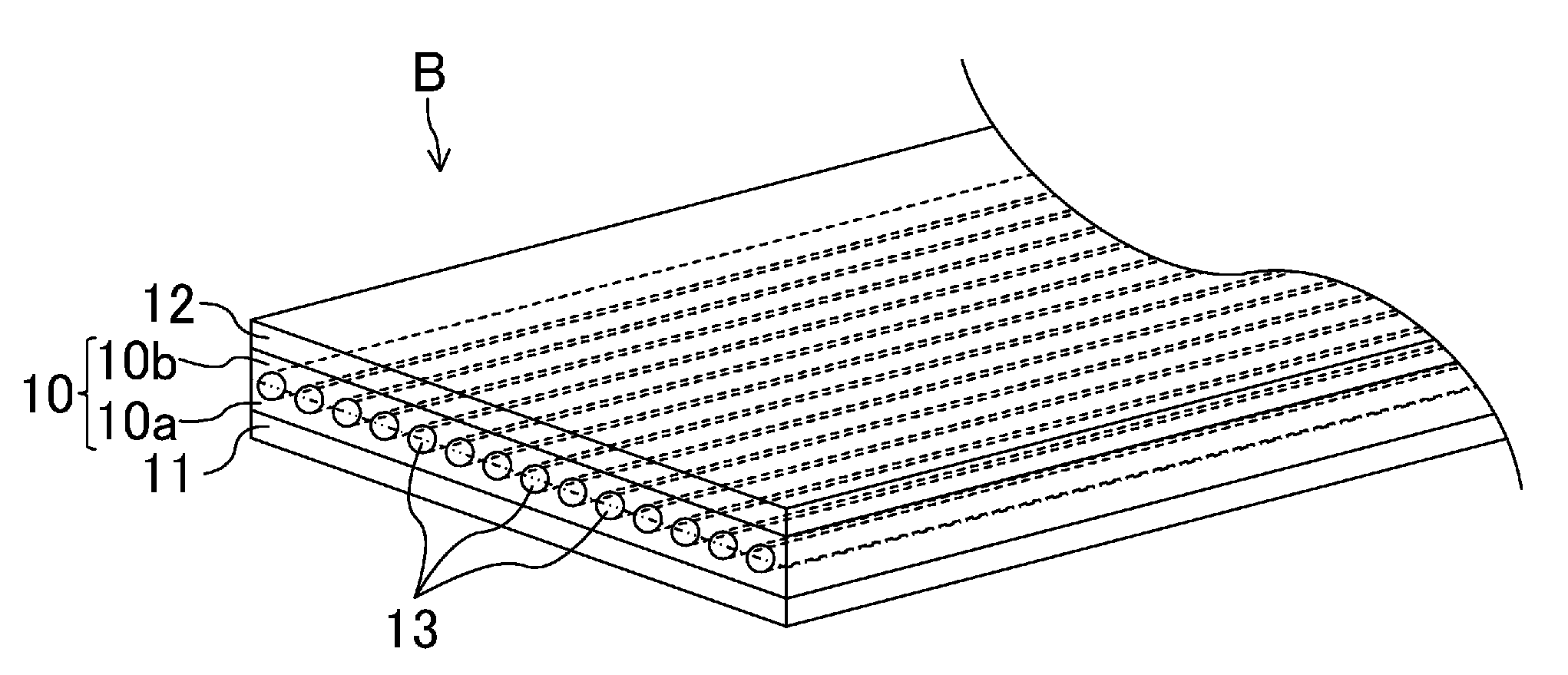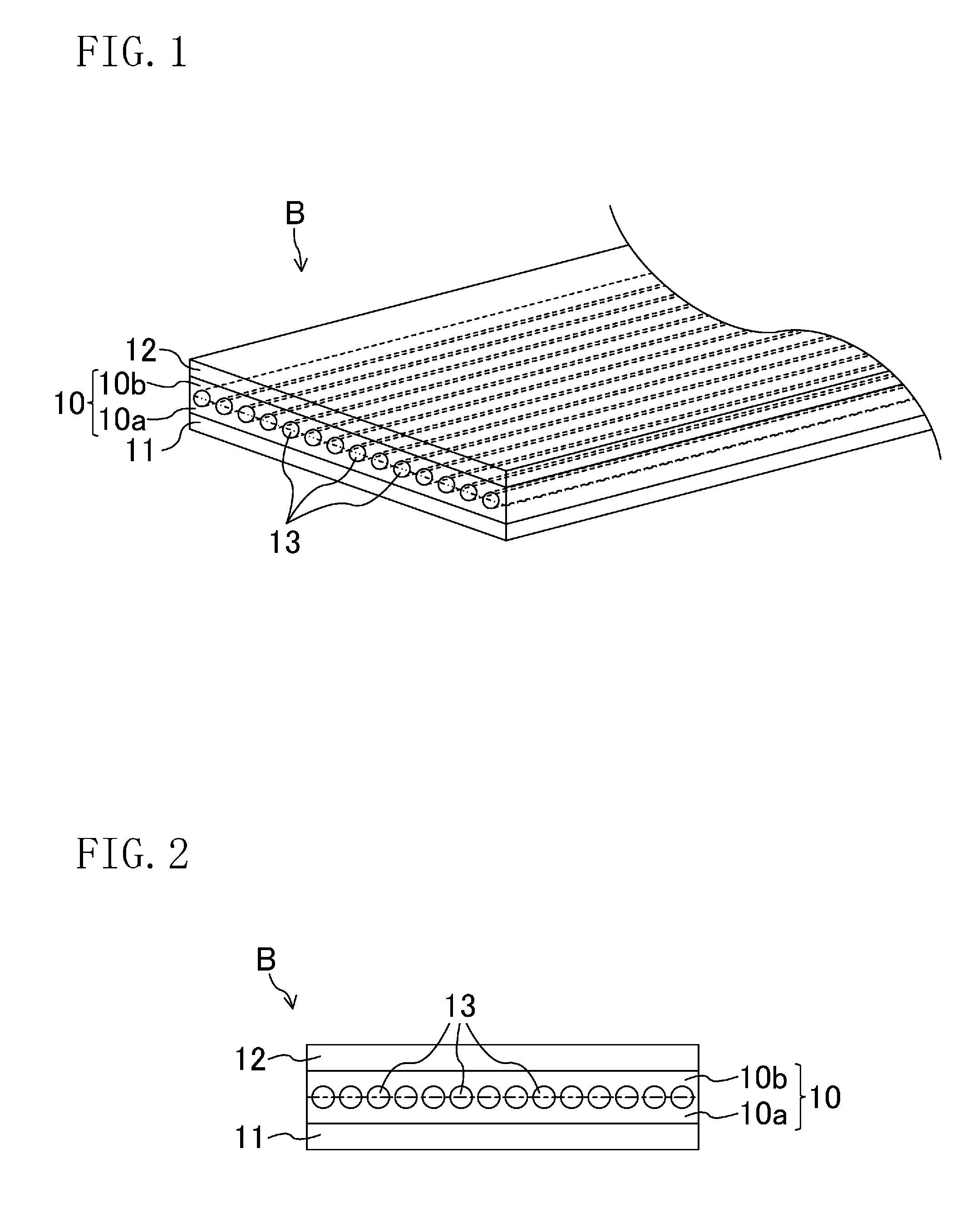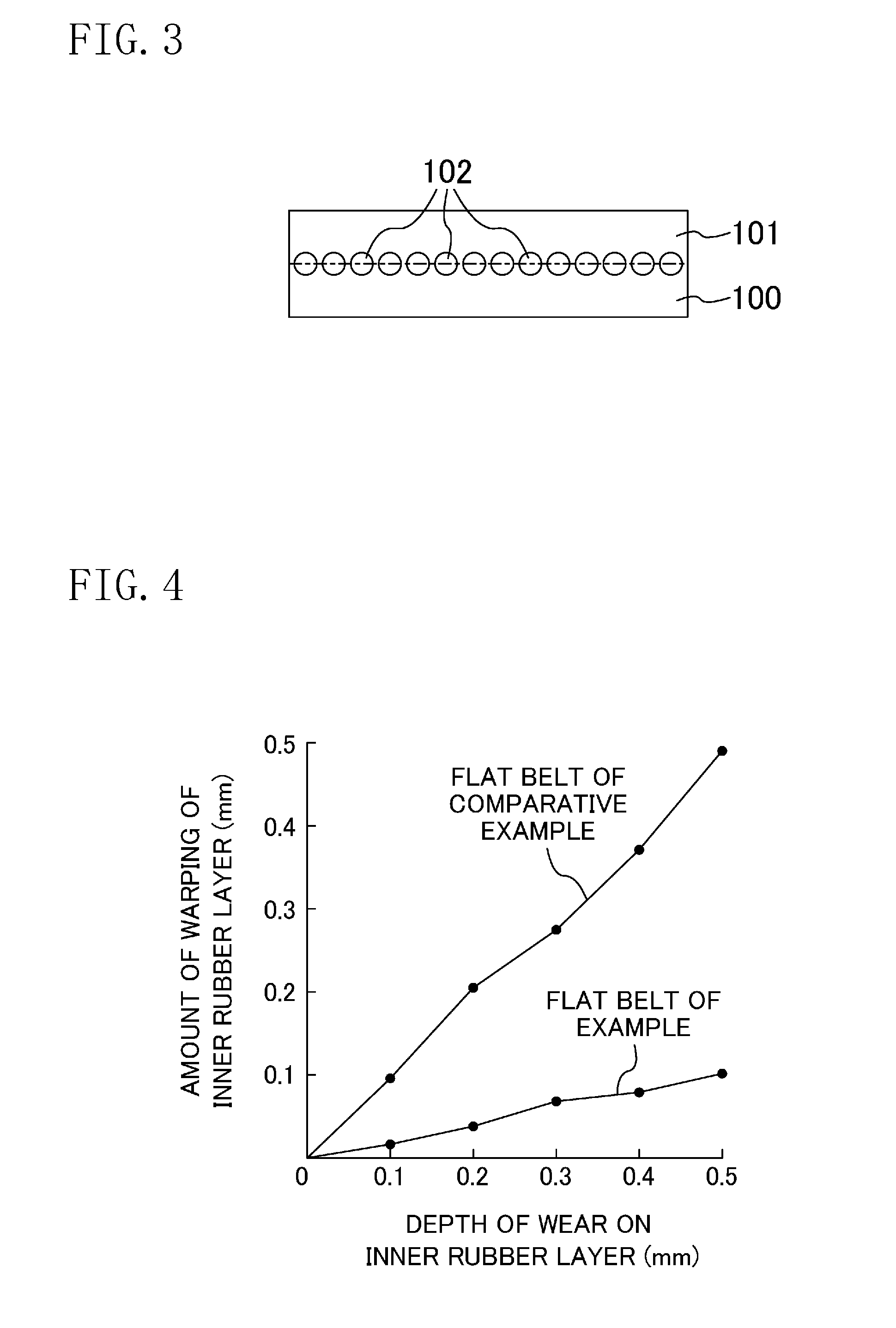Flat belt
a flat belt and belt technology, applied in the field of flat belts, can solve the problems of flat belts suffering a relatively small energy loss, members stretching or contracting at different ratios, rubber layers and canvas stretching or contracting to different extents, etc., to reduce warping along the belt width of flat belts, stable running of flat belts, and the effect of reducing slipping and snaking
- Summary
- Abstract
- Description
- Claims
- Application Information
AI Technical Summary
Benefits of technology
Problems solved by technology
Method used
Image
Examples
first embodiment
[0042]FIGS. 1 and 2 show a first embodiment of a flat belt according to the present disclosure. FIG. 1 is a perspective cross-sectional view schematically showing a flat belt B of the first embodiment. FIG. 2 is a cross-sectional view schematically showing the structure of the flat belt B.
[0043]As shown in FIGS. 1 and 2, the flat belt B includes an adhesive rubber layer 10 formed in an endless ring shape, an inner rubber layer 11 provided on the inner surface of the adhesive rubber layer 10 and corresponding to the first rubber layer, and an outer rubber layer 12 provided on the outer surface of the adhesive rubber layer 10 and corresponding to the second rubber layer. The inner rubber layer 11 comes into contact with a pulley, around which the flat belt is allowed to run, at the surface opposite to the adhesive rubber layer 10. The flat belt B is formed, for example, to have a width of about 20 mm and a total thickness of about 2.5 mm.
[0044]The inner rubber layer 11 and the outer r...
example
[0066]An example in which the present disclosure works in a concrete manner will be described next. A running test was conducted on a flat belt B of an example of the present disclosure to measure the amount of warping in relation to the depth of wear on an inner rubber layer 11. The amount of warping indicates how much the inner rubber layer 11 of the flat belt B has deformed compared to its original shape.
[0067]The flat belt B of this example has a structure similar to that of the flat belt B of the first embodiment. A tensile cord 13 of the example has a diameter of about 0.5 mm as a whole and is configured of bundled aramid cords each having a diameter of 2400 denier. An adhesive rubber layer 10 contains aramid fibers as the short fibers. In the flat belt B of the example, the inner rubber layer 11, a tensile-cord inner rubber layer 10a, a tensile-cord outer rubber layer 10b and an outer rubber layer 12 are the same as those exemplified in the first embodiment in thickness and i...
PUM
| Property | Measurement | Unit |
|---|---|---|
| total thickness | aaaaa | aaaaa |
| width | aaaaa | aaaaa |
| thickness | aaaaa | aaaaa |
Abstract
Description
Claims
Application Information
 Login to View More
Login to View More - R&D
- Intellectual Property
- Life Sciences
- Materials
- Tech Scout
- Unparalleled Data Quality
- Higher Quality Content
- 60% Fewer Hallucinations
Browse by: Latest US Patents, China's latest patents, Technical Efficacy Thesaurus, Application Domain, Technology Topic, Popular Technical Reports.
© 2025 PatSnap. All rights reserved.Legal|Privacy policy|Modern Slavery Act Transparency Statement|Sitemap|About US| Contact US: help@patsnap.com



